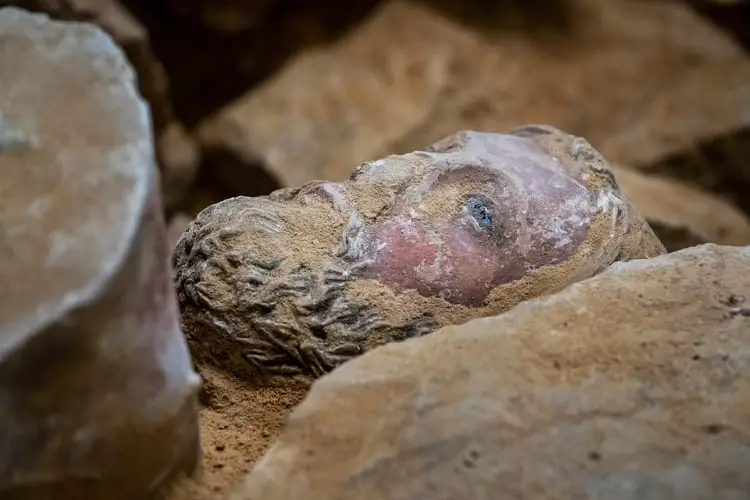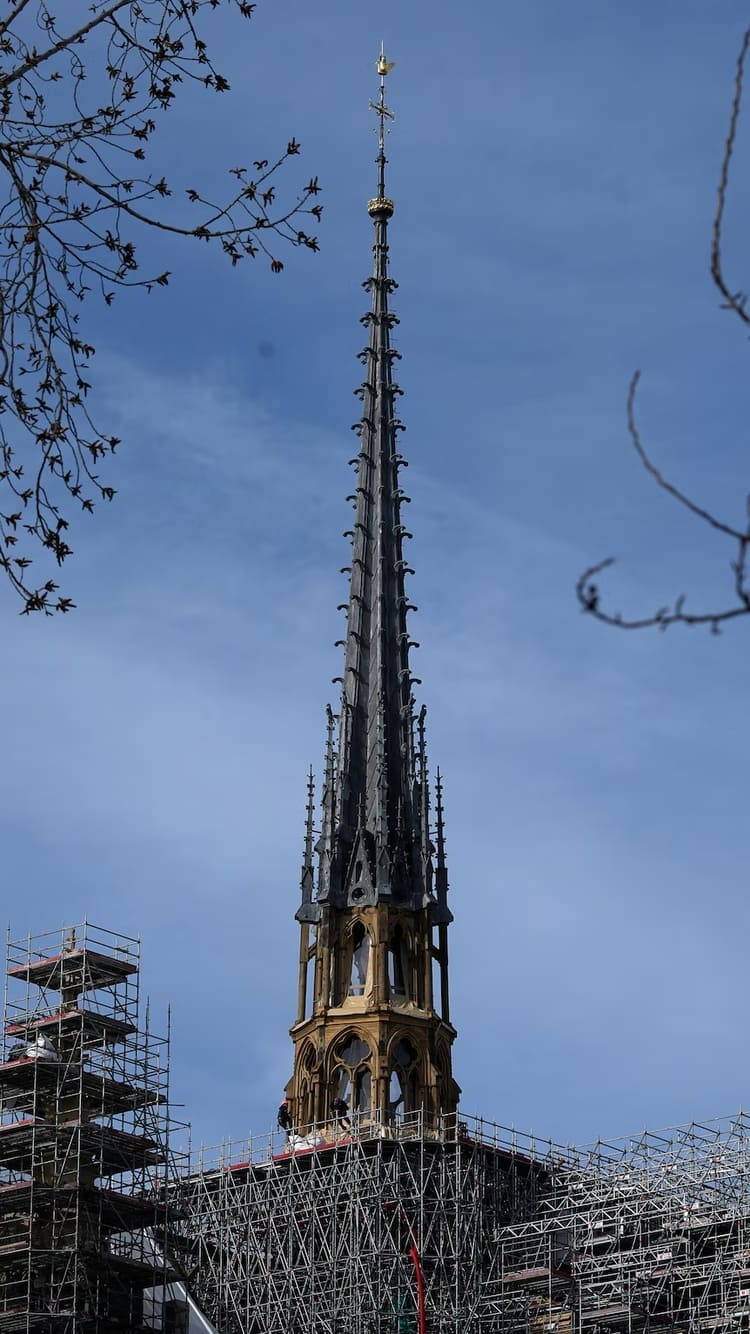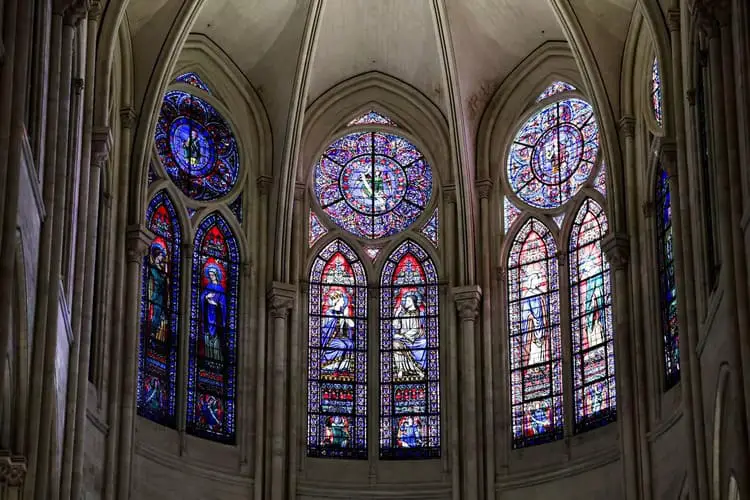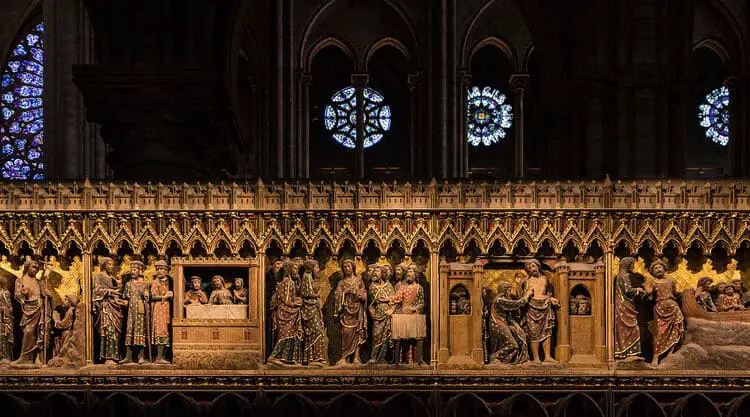Notre-Dame’s restoration has been an incredible journey of history, tradition, and innovation. After the devastating fire in 2019, the effort to rebuild this iconic cathedral uncovered hidden treasures, used ancient techniques, and sparked heated debates.


1. Ancient Tombs and a Sarcophagus Were Found
While stabilizing the cathedral after the fire, archaeologists uncovered incredible finds beneath its floor: ancient tombs and a 14th-century lead sarcophagus.
These discoveries, hidden for centuries, included human remains and artifacts that shed light on medieval Paris.
The sarcophagus, likely belonging to a high-ranking church official, was described as a “major scientific discovery” and offers a fascinating glimpse into the lives of those tied to Notre-Dame’s history.

2. Craftsmen Used Medieval Techniques to Rebuild
To honor Notre-Dame’s original Gothic style, artisans used techniques from the Middle Ages.
For instance, stone masons carefully shaped limestone blocks by hand, just as the cathedral’s original builders did.
Traditional methods also restored the intricate details of statues and carvings.
By using these ancient skills, the project preserved Notre-Dame’s authenticity while reviving craftsmanship that is rarely practiced today.
3. The Iconic Spire Is Being Rebuilt Exactly As Before

The fire destroyed the spire that was added in the 19th century, but its exact design is being recreated.
Craftsmen are using centuries-old oak trees from French forests to build the spire, mirroring the original construction process.
Even the intricate carvings on the spire are being faithfully reproduced.
This decision to restore rather than modernize reflects a commitment to maintaining Notre-Dame’s historical integrity.
4. New Fire Safety Measures Are in Place

The 2019 fire highlighted the need for better protection.
Now, Notre-Dame is equipped with advanced fire alarms, sprinklers, and thermal sensors.
These systems are carefully hidden to avoid disrupting the cathedral’s historical appearance.
Modern materials and techniques have also been used to make the structure more fire-resistant, ensuring the cathedral is protected from a similar tragedy in the future.
5. The World Came Together to Help Rebuild
Notre-Dame’s restoration is a global effort. Craftspeople from countries like the U.S., Germany, and Italy contributed their skills to the project.
From woodworkers to stained-glass specialists, experts worked together to restore every detail.
This collaboration reflects the universal admiration for Notre-Dame, as people from around the world felt a shared responsibility to help rebuild this cultural icon.
6. Centuries of Dirt Were Cleaned Away
Layers of soot and grime, accumulated over centuries and worsened by the fire, were carefully removed from Notre-Dame’s interior.
Using specialized cleaning methods, restorers revealed the bright white limestone and intricate carvings underneath.
Statues that had darkened over time now look as they did centuries ago, offering a refreshed view of the cathedral’s original beauty and craftsmanship.
7. The Grand Organ Was Spared but Needed Repair

Notre-Dame’s grand organ, one of the largest in the world, survived the fire but wasn’t untouched. Covered in soot and dust, the organ required extensive cleaning and restoration.
Each of its 8,000 pipes was disassembled, inspected, and returned to ensure it would sound as majestic as ever.
When the cathedral reopens, the organ will once again fill the space with its powerful music.
8. The Beloved Virgin and Child Statue Returned

One of Notre-Dame’s most cherished sculptures, the Virgin and Child statue, was removed for protection during restoration.
This iconic piece, often associated with the cathedral’s spiritual significance, has now been returned to its original place.
The statue, cleaned and restored, stands as a symbol of Notre-Dame’s resilience and the effort to preserve its history for future generations.
9. Incorporation of Modern Artistic Elements

As part of Notre-Dame’s restoration, renowned designer Jean-Charles de Castelbajac created new artistic vestments for the cathedral.
Known for his bold and colorful designs, Castelbajac blended tradition with a modern aesthetic, adding a fresh touch to the liturgical garments.
These pieces sparked conversations about the balance between honoring history and embracing innovation, showing how even centuries-old spaces like Notre-Dame can evolve with contemporary artistry.
10. Contemporary Stained Glass Was Added

While most of Notre-Dame’s restoration focuses on tradition, some modern elements were included.
New stained-glass windows were installed in several chapels, designed by contemporary artists.
These windows feature bold, minimalist designs that contrast with the traditional Gothic ones.
This addition has sparked debate among purists and modernists but reflects the balance between honoring the past and embracing the future.
11. Virtual Reality Helped Rebuild the Cathedral
Notre-Dame’s restoration benefited from cutting-edge technology, including virtual reality.
Using a digital twin of the cathedral, architects and engineers planned every step with precision.
This virtual model recreated every detail of the structure, allowing experts to identify weak points and test solutions before applying them.
This high-tech approach ensured the restoration was as accurate and efficient as possible.
12. Donations From Around the World Made It Happen
In the wake of the fire, over €840 million was donated by individuals, companies, and governments worldwide.
Contributions came from over 340,000 people, including small donations and large gifts from high-profile donors.
This outpouring of generosity underscored the deep connection people feel to Notre-Dame, proving that its significance extends far beyond Paris.
13. A New Reliquary for the Crown of Thorns

The Crown of Thorns, a sacred relic believed to have been worn by Jesus, was saved from the fire and has since been placed in a new golden reliquary.
This reliquary ensures the relic is both protected and beautifully displayed.
Its restoration highlights the spiritual and cultural significance of Notre-Dame as a place of worship and history.
14. Improved Accessibility for Visitors
As part of its restoration, Notre-Dame now includes features to make it more accessible for visitors.
Better lighting highlights the intricate details of its interior, while improved pathways ensure easier movement through the space.
These updates aim to enhance the experience for everyone while preserving the cathedral’s historic charm.
15. The Wooden Roof Was Rebuilt Using 12th-Century Methods
Nicknamed “the forest,” Notre-Dame’s original wooden roof was made from thousands of oak beams.
After the fire, artisans used traditional medieval techniques to rebuild it.
French oak trees, some over a century old, were sourced from sustainable forests.
This painstaking effort recreates the roof’s original appearance and demonstrates the revival of ancient craftsmanship.
16. Iron Staples Were Discovered in the Original Structure
During restoration, archaeologists found thousands of iron staples embedded in the cathedral’s stonework.
These staples date back to the 12th century and are some of the earliest known uses of metal in Gothic architecture.
Their discovery highlights the ingenuity of Notre-Dame’s original builders and adds another layer to its historical significance.
17. Vibrant Chapel Murals Were Restored

Hidden beneath layers of soot and grime, vibrant murals in Notre-Dame’s chapels were rediscovered during cleaning.
These colorful paintings, depicting religious scenes and decorative patterns, have been carefully restored to their original brilliance.
Visitors will now be able to see details that had been obscured for centuries.
18. A New Bronze Altar Was Installed

A modern bronze altar has been added to Notre-Dame’s interior. Designed to complement the cathedral’s historic aesthetic, the altar features sleek lines and artistic details.
Its addition represents a thoughtful blend of tradition and contemporary design, ensuring Notre-Dame remains a living space for worship and art.
19. Latex Paste Was Used to Clean Surfaces
To clean soot and dirt from Notre-Dame’s interior, restorers used a surprising tool: latex paste.
Applied to walls and statues, the paste dried and was peeled off, taking dirt with it.
This method revealed the cathedral’s original bright stone surfaces while protecting its delicate details.
20. A Fragment of the Choir Screen Was Rediscovered

During restoration, fragments of a 13th-century choir screen were uncovered.
The screen had been partially destroyed in the 18th century, but these pieces offered insights into its original design.
This discovery adds another layer to Notre-Dame’s history and highlights its continuous evolution over the centuries.
21. The Rooster Weathervane Is Back

The rooster weathervane, which once topped the spire, was recovered from the rubble after the fire.
Inside, it contained relics meant to protect the cathedral.
Restored and reinstalled, the weathervane now sits atop the reconstructed spire, symbolizing hope and continuity for Notre-Dame.

With a passion for travel and having visited over 50 countries, Dorian is eager to share his favorite spots and expert tips to help you explore Paris and France like a local.




